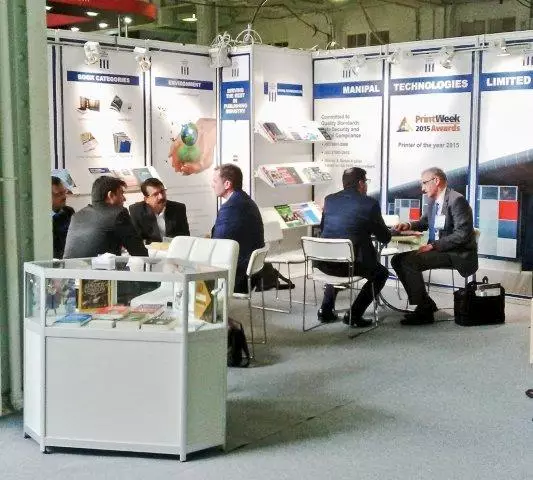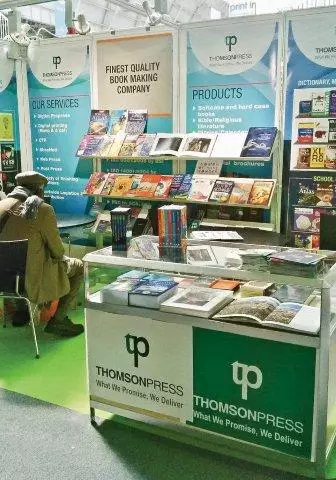India show at the London Book Fair '16
Print consultant Rajnish G Shirsat of R&S Enterprises attends the London Book Fair (LBF) from 12 to 14 April 2016, marking William Shakespeare’s 400th death anniversary, and returns with some heartwarming news: the future of the print book is safe, for now. He shares his experiences with PrintWeek India.
27 Jul 2016 | By Rajnish Shirsat
When it comes to the business of books, London Book Fair may be a poor cousin to Frankfurt, the world’s largest annual book event, but it is no less important. London is a major centre of English language publishing, and it is where future trends are experimented. Most importantly, the London Book Fair, which takes place in April every year, sets the tone where the world’s book market is heading, which finds its culmination in Frankfurt Book Fair, which takes place in October every year.
This year, the London Book Fair (LBF), which took place on 12-14 April, saw participation of publishing professionals from over 124 countries. From top author visits from Julian Fellowes, Jeffery Archer, Peter James, Marian Keyes, Judith Kerr, Tracy Chevalier, Jeanette Winterson and more, to six-figure book deals brokered and the best new talent discovered, the 45th edition of LBF was a vibrant showcase of international publishing and a bustling centre for rights negotiation.

Manipal stall
There was also a strong India show, with participation from the likes of Almats, IPP, Manipal, Multivista, Nutech, Parksons, Replika, Repro, Thomson Digital and Thomson Press, among others.
One of the trends I spotted during my visit to the Fair was the upbeat mood for the future. There was enthusiasm across all publishing verticals. Compared to the last few years, the feel of the market was certainly positive.
The Fair witnessed a gathering of 1,500 publishers from a wide variety of segments. There were enough reasons to celebrate, including the 400th anniversary of William Shakespeare, one of the most celebrated writers in the English language and the ultimate bestselling author (Shakespeare passed away on 3 May 1616).
Return of the print book
When eBooks hit the market around 10 years ago, with the launch of Amazon Kindle, there was a panic among publishers and printers alike, as many predicted this to be the end of the print book. As time passed, publishers jumped into the eBook bandwagon and aligned their verticals accordingly.
Today, however, no one is talking about eBooks. Today, eBooks are neither a boon nor a curse, just a part of larger publishing ecosystem. Today, stakeholders are not talking about the product, which is given. The concern is on efficiencies and innovation digital offers regardless of the format.
On the other hand, the print book is back in business, as Jacks Thomas, director, LBF, said. “There are definitely glimmers of hope coming out of the UK and Ireland,” Thomas said at the Fair’s opening press conference. “The sales for 2015 were up 2.6% in Ireland, and 3.7% in the UK according to Nielsen. In addition, consumer book purchases were up a solid 5% in the UK.”

Thomson Press stall
Thomas also said the 2015 data bears out a “much talked about” digital tipping point. The UK eBook sales were up just 4% in 2015, after posting increases of 17% in 2014, and 26% in 2013.
Meanwhile, Richard Nash, digital entrepreneur and publishing consultant, said that the books business is approaching a “plateau of convenience” and one reason eBook sales are in decline is that eBooks simply don't offer much to consumers beyond convenience. Yet, publishers continue to invest in digital experiments despite the growth slowing.
Considering books, on the other hand, volumes per title are shrinking in certain segments – particularly trade books. Thus, publishers still need a mix of both print and digital sales. Many publishers survive on print revenue they generate to fund their digital inroads.
With several new researches showing that children find it more difficult to retain whatever they have read in digital compared to print, parents are now being increasingly wary of their children reading digital. They are now looking at print material to substitute digital content.
This has opened new avenues for the publishers of children’s books. This opportunity is not without challenges. These children’s books, to combat with digital content, will need new formats, new specifications and innovation.
At the same time, there are segments where digital is no competition. According to the Nielsen survey, the rise in popularity of physical formats in 2015 saw growth in segments such as colouring books, activity and illustrated books, genres which still work best in print.
During the Fair, a leading UK publisher told me, “After several years of declining retail chains, across the global marketplace for books, and uncertainty in the print format itself (due to the threat of digital delivery), the opportunities for print books have settled back to a more predictable rhythm. The modern consumer has a sophisticated understanding of content delivery methods and often chooses to use all of the various channels available: mobile, desktop, print-by-post and retail, balancing need and convenience. The modern publisher must provide their content through all channels, and continue to adapt to the accelerated pace of change.”
As a leading Indian printer put it succinctly, there are three types of disruptions taking place in the publishing industry. “First is the print process, which is going digital,” he said, “Second, retail, which is becoming more and more online. The third is the product. It is also going the digital way,” he said. He added that there are opportunities for publishers who can find a mix of both the worlds – the physical and the digital. Opportunities like working on a zero inventory model, achieving more pre-sales and distributing on a global level is the way forward.
| Exhibitor Speak |
|
‘India is in a sweet spot as outsourcing hub’ At London Book Fair, we showcased books that we are currently producing for domestic and international publishers. We also displayed our retail notebooks, Doodle, our export stationary range and our own publication, Alifi Quran. As it was our first time at the Fair, we had a very minimalistic line up of meetings and absolutely no walk-ins. However, we have had access to a potential database, which we surely will approach. ‘The trend is of cautious optimism’ We are regulars at LBF. Like every year, this year too, we were present at the Fair with our team. We presented our range of books, magazines and stationery. The response has been positive and encouraging. |
|
Highlights from LBF 2016 |
|
Juggernaut turns heads |
 |











 See All
See All